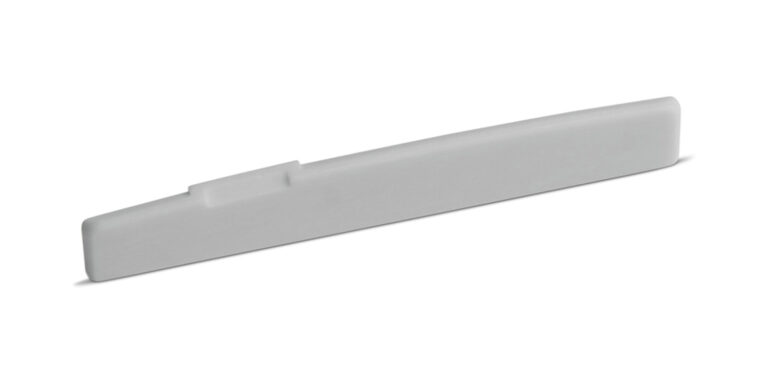Acoustic Guitar Saddle Direction
Wondering about proper acoustic guitar saddle direction? Determining the correct direction can be a bit tricky because it may seem as though your saddle could go either way. This article walks you through different ways to determine the proper guitar saddle position.
Look for the B Compensation
Many acoustic saddles will have backward compensation for the B string. To determine what type of compensation pattern your saddle has, look at your saddle’s pattern, then view our saddle compensation patterns guide. If you have a B compensated or B compensated with slanted bass saddle, then you just need to ensure that your saddle’s B compensation is correctly aligned under your B string.

Treble E Forward, Bass E Back
With other types of saddle compensation patterns, such as Fully Compensated, Wave Compensated, or Zig Zag Compensated, saddles will typically have the treble E sitting forward closer to the soundhole, whereas the bass E will sit backward closer to your bridge pins.

Saddle Bass E Taller than Treble E
Another way to determine correct guitar saddle direction is to compare your saddle’s end heights. The bass E end is often about 1 mm taller than the treble E end is, and for some guitars, such as Martin models, you might see the bass side around 2 mm taller. If this is the case for your saddle, then align the taller end under your wound bass strings. If you have a center line non-compensated saddle, this may be key to determining your acoustic guitar saddle direction.

View Our Guitar Saddle Installation Instructions
Please visit our Acoustic Guitar Saddle Installation Instructions. The first page shows common different saddle compensation pattern types with the side that should face toward your guitar’s soundhole.
